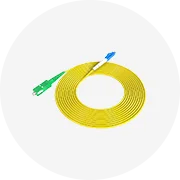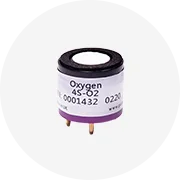Red insulator
(4603 products available)






MNS Busbar Holder 10*80mm Red SMC DMC Low Voltage Switchgear N Bus Middle Part Holder Support Insulator





Sm Series SM20 Sm25 Sm30 Sm 35 Sm40 Sm51 SM60 Sm76 low voltage busbar insulator red insulator



High voltage red epoxy resin capacitive sensor for 12kV switchgear busbar support insulator






Red ladder type insulation support stair type bus clamp copper bar clamp zero row isolation fixed support insulator






ZJ-24kv/75*190~210~225 24KV Red Epoxy Resin Support Insulator for KYN28-24 High Voltage Switchgear






Chaer Distribution cabinet red SM insulator SM7100 7105 7120 insulation column SM35 40 45 51 M8 M10






SM51*M10 Red insulator Insulated post M10*51 low voltage bus bar insulator
Popular in your industry






YIKA Red Bus Bar Insulator Used in Electric Distribution Boxes Busbar Step Insulator



SB20*30 Trending hot products red low voltage bulk molding compounds portable insulator






FATO SM E-outstanding Busba Insulator with Combined Screw Red Resin Polyester Standoff Insulators






High Voltage Red Cross-arm Electric Pole Insulator / Electrical Composite Insulators





DUWAI Pin Type Insulator Red Colour Rohs Low Voltage Support SM100 M12 Busbar Copper Standoff






RTV Silicone Post Insulator P-70 Coating Red Epoxy Resin for Canada, USA and Mexico






Yueqing Wortai Red Epoxy Resin Material CT4-50 CT Step Insulator Support






Professional Manufacture Strong Bearing Capacity 10 Mm Red Color Heat Shrink Tube busbar insulator






High Quality Red Color Heat Shrinkable Electrical Insulator For Cable Insulation Protection



CJ series low voltage cabinet switchgear red step insulator standoff insulator busbar insulator






12kv Red Epoxy Resin Wall Bushing Contact Box Capacitive Divider and Insulator for Switchgear






Drum Type Customized Low Voltage Electrical SM Red Ceramic Busbar Insulator





KELUOYI Red Own factory SM Busbar insulator SM51 M6 M8 M10 Busbar support insulator






18650 Battery PVC Insulator Shrink Tubing Heat Shrinkable Tube Film Sleeve in Red Yellow Blue Green White Black Gray Shrink Tube












Professional manufacturer red low voltage high efficiency porcelain insulator



Hongfei Red Epoxy Resin Insulator With Capacitor CG5-40.5Q/140*320(380)mm For High Voltage






High voltage red epoxy resin capacitive sensor for 12kV switchgear busbar support insulator






Epoxy Resin Insulators Red Insulation Equipment Epoxy Resin Insulator Insulation Equipment Transformer Supporting Insulator






18650 Battery PVC Insulator Shrink Tubing Heat Shrinkable Tube Film Sleeve in Red Yellow Blue Green White Black Gray 1S 2S 3S 4S

MidNite busbar insulator covers help protect from accidental shorts - MN1/0LBBC-R (Long red)






Iron oxide red Silicone Fiberglass Thermal insulator Fiberglass protective fire sleeve hydraulic hose sleeve






JINH Customized Insulator SM-35 Low Voltage DMC Red Busbar Supporting With CE






Cheep Price Red Color SM-30 DMC Low Voltage Electrical Insulators Conical Busbar Insulators Electric Insulator Blocks






Factory Priced Copper Screw Low Voltage Bus Bar Electrical Busbar Support Red Pin Insulator Bulk Insulation Materials Elements






epoxy resin composite insulator/ Accept customized high quality epoxy insulator






Insulator porcelain green red polyester binding tape 60516050 polyimide pi film adhesive tape
Top categories
About red insulator
Introduction to Red Insulator
Red insulators play a crucial role in various electrical and telecommunications applications. Their vibrant color not only makes them easily identifiable but also denotes specific characteristics in isolation and safety requirements. These insulating materials are designed to withstand high voltages while providing excellent resistance to environmental factors, making them indispensable in both indoor and outdoor installations.
Types of Red Insulator
Red insulators are available in several types, each designed for specific applications. Understanding the types is essential for making informed decisions in procurement and installation. Here’s a breakdown of the various types:
- Porcelain Insulators: Known for their durability and high mechanical strength, porcelain red insulators are often used in power transmission and distribution systems.
- Polymer Insulators: These lightweight and flexible insulators are made from silicone or rubber, offering enhanced performance in terms of hydrophobicity and pollution resistance.
- Glass Insulators: Although less common, glass red insulators provide excellent electrical properties and resistance to UV radiation, making them suitable for specific applications.
- Composite Insulators: Combining the best features of porcelain and polymer insulators, these red insulators are designed to endure harsh environmental conditions while maintaining reliable performance.
Applications of Red Insulator
Red insulators find application across various sectors, thanks to their unique properties and reliability. Here are some of the common applications where red insulators play a pivotal role:
- Electrical Power Transmission and Distribution: Red insulators are widely used to support overhead power lines, preventing electrical discharge and ensuring safe power management.
- Telecommunications: Their insulation capabilities protect cables and connections in telephone and internet systems, thereby ensuring uninterrupted communication.
- Railways: Red insulators are critical components in railway signaling and overhead line systems to maintain safety and reliability.
- Renewable Energy: In wind and solar energy systems, red insulators are employed to enhance system stability and performance.
Features and Advantages of Red Insulator
Understanding the features and advantages of red insulators is vital for recognizing their value in modern applications. Here’s why they stand out:
- High Voltage Resistance: Red insulators are engineered to withstand high voltages, providing an essential safety barrier in electrical systems.
- Weather Resistance: They are designed to withstand extreme temperatures, moisture, and UV exposure, making them suitable for outdoor applications.
- Durability: Most red insulators are built to last, minimizing the need for frequent replacements and reducing long-term costs.
- Easy Installation: Many types of red insulators come with user-friendly features for easy mounting and disassembly, facilitating quick installations.
- Color Coding: The red color serves as a visual indicator for operators, enhancing safety and reducing accidental handling.















































